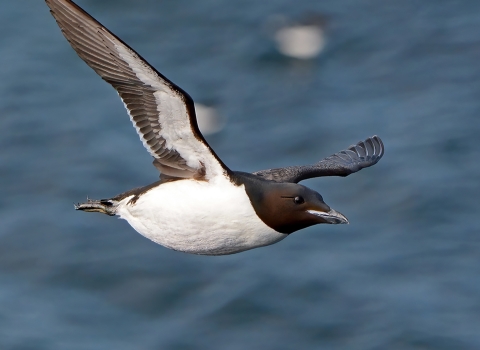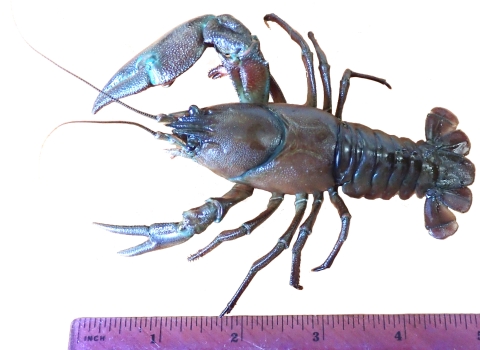The U.S. Fish and Wildlife Service just announced the award of $6.4 million in Tribal Wildlife Grants to Native American and Alaska Native Tribes across 17 states. More than $1.3 million of that total will support seven federally recognized Tribes in Alaska.
Tribal Wildlife Grants are intended to help federally recognized Tribes develop programs for the conservation of habitat and species of traditional or cultural importance. The Funding Opportunity Announcement usually opens in mid to late February with applications accepted until mid-June and funding selection notifications sent out to successful applicants in the fall. Tribes interested in applying for next year's funds can contact Alaska's Tribal Wildlife Grants Coordinator John Warzybok.
Funded Projects
Cheesh’na Traditional Council: Mentasta Caribou Herd Tribal Monitoring
Cheesh’na Tribal Council and Ahtna Intertribal Resource Commission will supplement the current monitoring being conducted by Wrangell-St. Elias National Park and Preserve, and the Alaska Department of Fish and Game. The additional resources will improve monitoring efforts and allow for more information to be gathered on the Mentasta Caribou Herd. The increased number of deployed GPS collars will contribute to more accurate management decisions specifically in regard to the existing Federal subsistence caribou hunt, the new Federal subsistence caribou hunt, and bolster the data needed for revisions of the Mentasta Caribou Herd Cooperative Management Plan.
Chickaloon Native Village: Matanuska Watershed Adult Salmon Research Project
This project will describe the run timing, enumeration, and species composition of adult Alaska salmon in Moose Creek, collect baseline water quality data on Moose Creek and other tributaries of the Matanuska River, determine the presence of historic salmon populations in Moose Creek using eDNA, collect genetic information from sockeye salmon in Old Man Lake, and build program capacity for additional fisheries projects in the future.
Native Village of Eyak: Copper River Chinook Salmon In-river Abundance Estimate and Eshamy Salmon Weir Program
TWG funding will allow NVE to continue annual in-river abundance estimates of Copper River Chinook salmon to inform fisheries regulatory decisions at both the state and federal level and provide necessary data for sustainable fisheries management.
Hoonah Indian Association: Increasing the efficiency of determining anadromous fish habitat quality
The Hoonah Native Forest Partnership has utilized LiDAR data since 2015 to develop stream networks and fish habitat and create, for the first time, an intrinsic potential (IP) model for pink and chum salmon and localizing an IP for coho. These results can decrease the effort required to document anadromous fish on the landscape and identify opportunities for restoration and areas for protection. This Tribal Wildlife Grant award will finalize five years of LiDAR-linked anadromous work by fully validating a coho IP model for the Hoonah area and establish an end of anadromy model rigorous enough to be utilized by management with results accessible to any community with a LiDAR dataset that would like to model the results for their own communities.
Sun’aq Tribe of Kodiak: Functional eradication of invasive signal crayfish in the Buskin Watershed, Kodiak, Alaska, through community support and management goals
For nearly the past decade, the Sun’aq Tribe of Kodiak has been gravely concerned about the presence of signal crayfish in the Buskin Watershed in terms of its impact on wild salmon stocks vital to the subsistence culture and lifestyle of Sun’aq Tribal Citizens as well as non-Tribal members of the Kodiak community. This two-year project will enable further direct eradication efforts, enhanced monitoring, and community involvement with research and eradication to maximize our positive efforts.
Native Village of Tazlina: Wolf Pack Monitoring Range, Distribution, and Diet in Ahtna’s Eastern Territory
The persistent low population size of the Mentasta Caribou Herd and the recent crash of the Nelchina Caribou Herd has tribal citizens concerned about the balance of the ecosystem. By updating the knowledge base with current data using advanced GPS collars and analysis techniques, the program aims to enhance the understanding of wolf packs in an area that haven’t been studied for over 30 years and gain insight into their range, distribution, and diet within the Eastern portion of the Ahtna Territory.
Yakutat Tlingit Tribe: Yakutat Forelands Aquatic Habitat and Coho Salmon Monitoring and Assessment
Yakutat Tlingit Tribe (YTT) will continue to increase their capacity to collect, manage and analyze data to support managers of not only YTT but also City, State, and Federal agencies. YTT will sample two streams for water quality monitoring as well as eDNA sampling for Coho salmon presence and biomass. Data collected with these TWG funds will supplement water quality data from 12 streams sampled since 2019 and preliminary eDNA sampling for Coho salmon on three streams in 2022 in order to develop recommendations for next steps in monitoring and fisheries management in addition to identifying potential sites for future stream restoration activities.
-FWS-
The U.S. Fish and Wildlife Service works with others to conserve, protect and enhance fish, wildlife, plants and their habitats for the continuing benefit of the American people. For more information, visit www.fws.gov and connect with us on social media: Facebook, Instagram, X (formerly known as Twitter), LinkedIn, FlickrYouTube and Apple Podcasts
In Alaska we are shared stewards of world renowned natural resources and our nation’s last true wild places. Our hope is that each generation has the opportunity to live with, live from, discover and enjoy the wildness of this awe-inspiring land and the people who love and depend on it.





